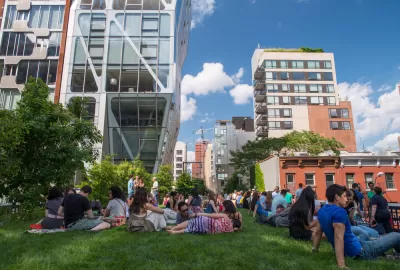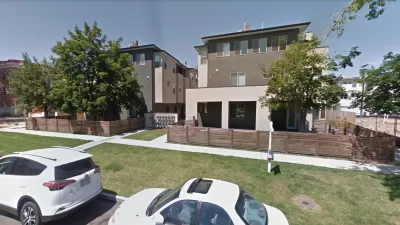While urbanists target zoning reform to help build more housing in desirable neighborhoods, other neighborhoods around cities are being left behind to languish, according to this opinion piece published by Forbes.

An op-ed by Pete Saunders critiques the effects of zoning reform that only seeks to build walkable urbanism in already desirable neighborhoods.
Writing for Forbes, Pete Saunders launches an investigation of the skyrocketing housing prices by identifying several root cases of the common problem around U.S. cities. According to Saunders changing metropolitan economies, geography and the nature of redevelopment versus greenfield development are all contributing to the trends in the housing market. "But perhaps the greatest factor driving prices upward in cities is the growing preference for walkable urbanism (WU)," adds Saunders.
And therein the problem lies, according to Saunders's argument. Given that walkable urbanism is in finite supply, it's troubling that urbanists tend toward tunnel vision, or "a laser focus on a select group of neighborhoods in a given city that boosts prices in the most desirable areas, and correspondingly drops them in similarly constructed but less desirable neighborhoods."
Saunders calls on a housing price analysis and data visualization of New York City completed by Constantine Valhouli. Saunders uses that evidence to reach the conclusion that while zoning reform pursued by urbanists to help build new walkable urbanism might achieve those ends in certain desirable neighborhoods, it might also lead to negative, unintended consequences in many other parts of cities.
FULL STORY: Zoning Reform: Not (Entirely) The Answer

Pennsylvania Mall Conversion Bill Passes House
If passed, the bill would promote the adaptive reuse of defunct commercial buildings.

World's Largest Wildlife Overpass In the Works in Los Angeles County
Caltrans will soon close half of the 101 Freeway in order to continue construction of the Wallis Annenberg Wildlife Crossing near Agoura Hills in Los Angeles County.

U.S. Supreme Court: California's Impact Fees May Violate Takings Clause
A California property owner took El Dorado County to state court after paying a traffic impact fee he felt was exorbitant. He lost in trial court, appellate court, and the California Supreme Court denied review. Then the U.S. Supreme Court acted.

Coming Soon to Ohio: The Largest Agrivoltaic Farm in the US
The ambitious 6,000-acre project will combine an 800-watt solar farm with crop and livestock production.

New York’s Deadliest Neighborhoods for Pedestrians
Pedestrian deaths rose last year, but remain below pre-2020 levels.

Eviction Looms for Low-Income Tenants as Rent Debt Rises
Nonprofit housing operators across the country face almost $10 billion in rent debt.
City of Costa Mesa
Licking County
Barrett Planning Group LLC
HUD's Office of Policy Development and Research
Mpact Transit + Community
HUD's Office of Policy Development and Research
Tufts University, Department of Urban and Environmental Policy & Planning
City of Universal City TX
ULI Northwest Arkansas
Urban Design for Planners 1: Software Tools
This six-course series explores essential urban design concepts using open source software and equips planners with the tools they need to participate fully in the urban design process.
Planning for Universal Design
Learn the tools for implementing Universal Design in planning regulations.

























